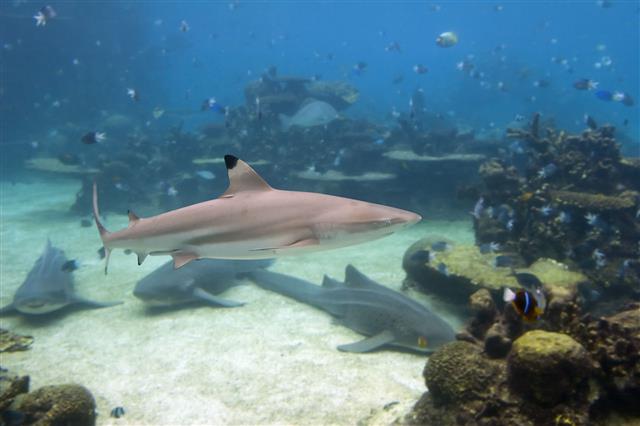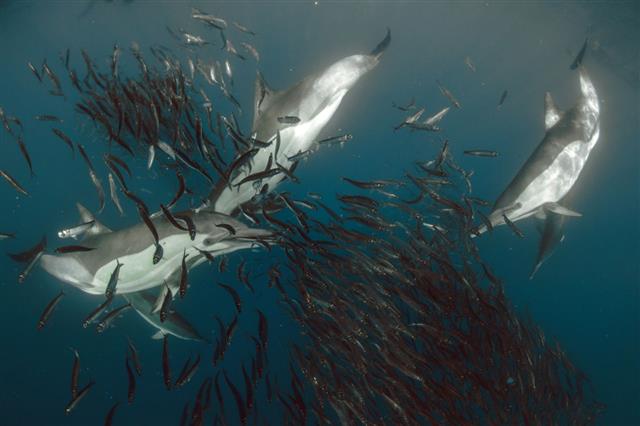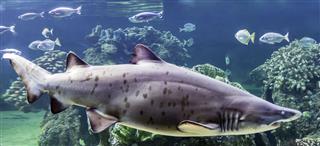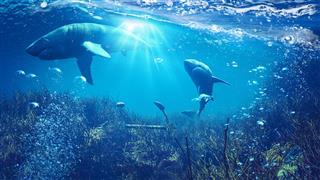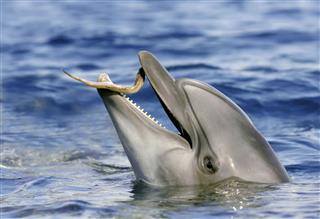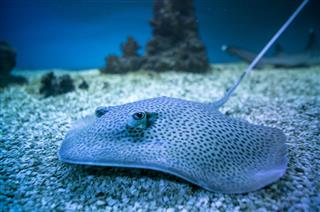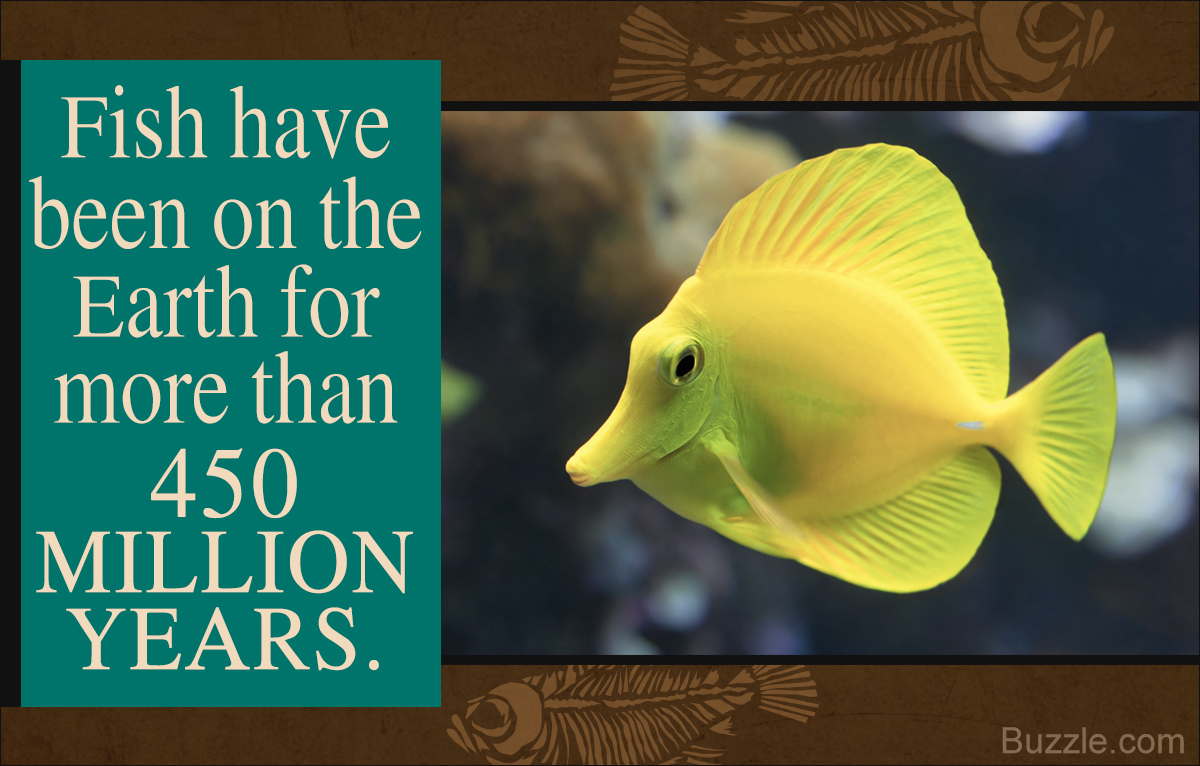
A great diversity is observed in the diet of fish depending the types and species. Some of the fish are even herbivorous! Here are the details of diet of different kinds of fish.
The different species of fish have their specific feeding habits. The jawless fish i.e. the Agnathans have limited options for feeding since they don’t have jaws that move up and down. Their only tool for eating is the sharp set of teeth. The hagfish which belongs to this category is known to feed mainly on dead animals. It is observed that the fish found in shallow waters mainly feed on shrimp, crabs and other crustaceans. The diet of fish from deep waters has great diversity; some these fish are omnivores and feed on aquatic animals including the crustaceans, worms and smaller fish. The diet of fish is classified on the basis of their feeding habits.
The dietary habits of fish differ from one species to another, and it is very difficult to come up with a detailed list of marine plants and animals on which they feed. While some species are specifically herbivorous or carnivorous in nature feeding on either marine plants or animals, others are omnivorous in nature feeding on both.
- Algae: The algae form the diet of herbivorous as well omnivorous fish. Omnivorous fish eat macroalgaes along with crustaceans for which they have to go hunting.
- Sea Grasses and Algae: The fish that feed on algae and sea grass are totally herbivorous.
- Algae and Detritus: Coral slime, the solid waste matter released from fish and organic matter which gets accumulated over time on the sea floor constitute the detritus. This detritus forms the diet of many different types of fish.
- Sponges: The omnivorous fish just like Angelfish feed on sponges. The sponges form the bulk of their diet.
- Plankton: The plankton which includes different types of fish, shrimp, copepods, mysids and amphipods are a supplementary part of the diet of fish.
- Mixed Diet: Omnivorous fish that feed at the bottom of the ocean have a mixed diet. They are opportunistic in nature and survive on almost any kind of food they obtain near the bottom of sea. Their diet includes worms, small fish, crustaceans and almost everything that is edible.
- Other Fish: There are few species of fish which prey on other fish by means of ambush.
- Crustaceans: Shrimp, crabs and such crustaceans form a major diet of some of the fish species.
- Invertebrates: Small invertebrates which form the diet of generalized invertebrate feeders include snails, sea urchins, worms and star fish. Sedentary or sessile organisms like the corals, polyps and clams too form the diet of these invertebrate feeders.
- Parasites: Some of the fish feed on parasites of other fish species.
While that was the general classification of different types of fish on the based on what they eat, here is some information about the specific diet of some of the most popular species of fish in the world.
- Sharks: The sharks feed on seals, smaller fish, plankton available in the sea and also their own species.
- Dolphins: The dolphins feed on a variety of fish; however, the main diet of dolphins includes squids and mackerel. The mackerel are preferred by dolphins over squids because the former contain a large amount of body fats. They also feed on cods, herrings and plankton.
- Salmon: The salmon are carnivores and feed on small invertebrates and zooplankton while they are young. As they get bigger in size, the salmon start eating krill, herrings and other small fish. The salmon reared in farms are fed with a mixture of different types of fish.
- Piranha: These fish are carnivorous in nature and they feed on a variety of aquatic creatures. Crustaceans, mollusks, insects and other fish form the diet of piranhas. They may also eat the amphibians, dead birds and rodents.
- Trout: The trout is basically a carnivore which feeds on different fish (mainly Cisco and Whitefish), shrimp and small-sized mammals. This fish is also known to feed on plankton which makes it an omnivore.
- Eel: The main diet of eels include crabs and smaller fish. The eel also feeds on other invertebrates apart from crabs.
- Ray Fish: The ray fish are omnivorous in nature. They feed on shell-covered creatures like snails, oysters, clams, crabs, etc. Some of these fish also consume the plankton.
- Jelly Fish: The jelly fish don’t have a developed digestive system. They eat food that is attached to their tentacles. Generally, zooplankton and small fish form the diet of jelly fish.
- Scorpion Fish: This fish makes use of the ambush technique and preys on smaller fish.
- Gold Fish: The gold-fish is omnivorous and its diet ranges from plankton, detritus, worms, insects to larvae.
- Koi fish: The koi fish feed on lettuce, algae, peas and even fruits. The koi fish reared in aquariums are not fed with a high protein diet since it causes digestive problems. Crustaceans also form a major part of their diet.
Pet Fish Diet
The pet fish are given food in the form of flakes, granules and pellets. Vegetable matter, raw potatoes, bits of beans, peas, zucchini, etc. are fed to the pet fish. Sponges and spirulina algae are some of the foods that are given to the fish in the frozen form.
The diet of fish is largely influenced by the environment in which they live. Most of the fish are carnivorous, while a few of them are completely herbivorous. The information presented above points to the fact that different fish have their own, specialized feeding habits. We can say that fish are adept at obtaining rich nutrients from the aquatic environment they inhabit.
